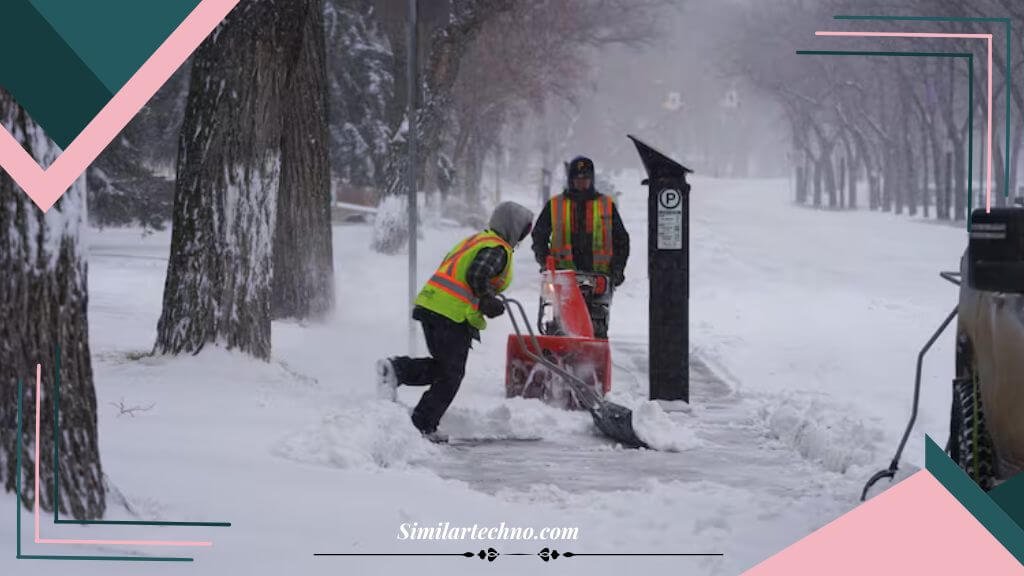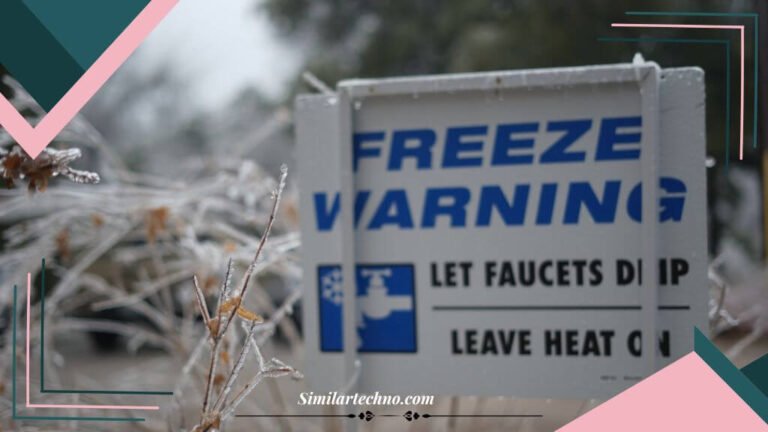Winter storm warning – these words can sound terrifying, especially when you’re not fully prepared for what’s coming. I’ve had my share of winter storms, and each time a warning is issued, it brings a sense of urgency. From freezing rain to heavy snow, these warnings aren’t just about the snow piling up; they’re about preparing yourself and your family for what lies ahead. Over the years, I’ve learned the importance of paying attention to the signs and being ready for the worst. In this post, I’ll share what I’ve discovered about winter storm warnings and how they can make a real difference in staying safe when the weather turns severe.

What Causes a Winter Storm Warning?
A winter storm warning is issued when specific weather conditions signal a potentially dangerous storm. Meteorologists observe temperature, wind speed, and atmospheric moisture to understand what could happen. For example, when cold air moves in with moist air from the ocean, it can lead to snow, sleet, or freezing rain. A winter storm warning is declared when these conditions are expected to cause severe disruptions. Meteorologists use satellite images, weather radars, and computer models to predict the storm’s path and strength. They track the storm’s movement, paying attention to how the temperature changes at different levels of the atmosphere. This allows them to give advance notice so that communities can prepare. The warning is issued when the storm is likely to bring hazardous conditions, such as heavy snow or ice accumulation, making travel dangerous and causing power outages.
Types of Winter Weather Events
Different types of winter weather can lead to a winter storm warning. These include:
- Snowstorms: Heavy snow that makes driving and walking hard.
- Ice storms: Ice forming on trees and power lines, making them heavy and dangerous.
- Blizzards: Snowstorms with powerful winds reduce visibility and make it difficult to travel.
Each of these weather events can cause the need for a winter storm warning.
How to Know When a Winter Storm Warning is Issued
When a winter storm warning is issued, you can find it through several reliable sources. Weather apps are a quick way to get alerts on your phone, providing updates on upcoming storms. News stations on TV and online will also broadcast warnings, giving you the latest information. You can also check the National Weather Service website for detailed reports and alerts. The warning will tell you when the storm is expected to arrive, how long it will last, and the type of weather to expect, such as heavy snow, ice, or freezing rain. It will also highlight potential risks, like dangerous road conditions or power outages. The warning will give you an idea of the storm’s severity, allowing you to plan and take action to stay safe.
Read More: Ticketmaster Refund: Get Your Money Back Fast 2025
Winter Storm Warning vs. Other Weather Warnings
Understanding the differences between a winter storm warning, watch, and advisory is essential. A winter storm warning means severe weather is expected, and you should take immediate action to stay safe. On the other hand, a watch means that conditions are right for a storm to happen, but it hasn’t started yet. It’s a reminder to stay alert. An advisory is less severe, indicating that the storm may cause minor issues, but it’s not as dangerous as a warning. To stay safe during each of these, being prepared is essential. For a warning, you should make sure your emergency kit is ready and avoid going outside if possible. During a watch, stay informed and monitor updates. If there’s an advisory, continue with caution when travelling, but it’s generally safer to go about your day with minor adjustments.
How to Prepare for a Winter Storm Warning
When a winter storm warning is issued, it’s time to prepare. One of the first things you should do is check your emergency kit. Keep essentials like bottled water, non-perishable food, flashlights, batteries, blankets, a first aid kit, and any necessary medications. Don’t forget a portable phone charger and extra warm clothing. Preparing your home is just as important. Ensure windows and doors are sealed to keep the cold out and check that your heating system works. Stock up on firewood if you use a fireplace. Ensure your car has a full gas tank, and keep an emergency kit with a blanket, shovel, ice scraper, and some snacks. It’s also wise to check tyre pressure and ensure your car’s battery is in good condition. Being ready in advance will help you stay safe when the storm hits.
Staying Safe During a Winter Storm Warning
During a winter storm warning, it’s crucial to stay inside and avoid unnecessary risks. If you don’t have to go out, stay indoors and keep warm. Layer up with cosy clothing; if your home has a fireplace, use it to stay warm. Keep doors and windows closed to conserve heat. If you must leave the house, ensure you’re prepared for harsh conditions. One of the biggest dangers during a storm is icy roads. Avoid driving unless necessary, as ice can make roads extremely slippery. If you must drive, take it slow, use your headlights, and keep a safe distance from other vehicles. Always have your phone charged in case of an emergency, and let someone know where you’re going. Staying inside and avoiding dangerous conditions will help you stay safe during the storm.
Read More: Trump Sentencing: Shocking Sparks Nationwide 2025
Winter Storm Warnings and Power Outages
During a winter storm warning, power outages are common due to heavy snow and ice buildup on power lines. The weight of the snow or ice can cause trees to fall, bringing down electrical wires and disrupting power. Depending on the storm’s severity, these outages can last for hours or even days. Keep extra blankets, warm clothing, and a flashlight on hand to stay safe if the power goes out. It’s important to avoid using candles to prevent fire hazards. If you have a portable heater, use it cautiously, ensuring it’s not too close to anything flammable. Also, conserve phone battery by using it only for emergency calls. If you rely on electricity-powered medical equipment, have a backup plan, like a generator or a nearby family member’s house. Staying prepared will help you stay comfortable and safe during a power outage.
What to Do After a Winter Storm Warning
After a winter storm warning, it’s crucial to safely clear snow and ice from your walkways and driveway. Start using a shovel or snow blower to remove as much snow as possible. Be careful not to overexert yourself, as shovelling can be tiring. Use a de-icer or salt to melt ice, but avoid using too much to protect plants and surfaces. If the ice is thick, you may need to use a scraper. After clearing the snow, check your home for any damage caused by the storm. Look for fallen branches, broken windows, or any roof damage from the weight of the snow or ice. Check your pipes for any freezing or leaks, and inspect your heating system to ensure it’s working correctly. By taking these steps, you can keep your property safe and avoid further damage after the storm.
FAQs
What is a winter storm warning?
A winter storm warning is issued when severe weather, such as heavy snow, ice, or blizzards, is expected to cause significant disruptions.
How do I know if a winter storm warning is issued?
You can learn about a winter storm warning through weather apps, news broadcasts, or alerts from the National Weather Service.
What should I do during a winter storm warning?
During a winter storm warning, stay indoors, avoid travel, and stay warm by safely layering clothing and using heating sources.
How long does a winter storm warning last?
A winter storm warning typically lasts from several hours to a day, depending on the severity and movement of the storm.
Can a winter storm warning cause power outages?
Yes, winter storm warnings often lead to power outages, as heavy snow and ice can cause power lines or trees to fall.
Conclusion
In conclusion, a winter storm warning is a severe alert that requires prompt attention and preparation. Knowing the causes, how to stay informed, and what steps to take before, during, and after a storm can make all the difference in staying safe. Preparing is key, whether stocking up on emergency supplies, staying off icy roads, or knowing how to clear snow and ice safely. By understanding what a winter storm warning entails and acting accordingly, you can protect yourself, your family, and your home from the harsh conditions of winter storms.







